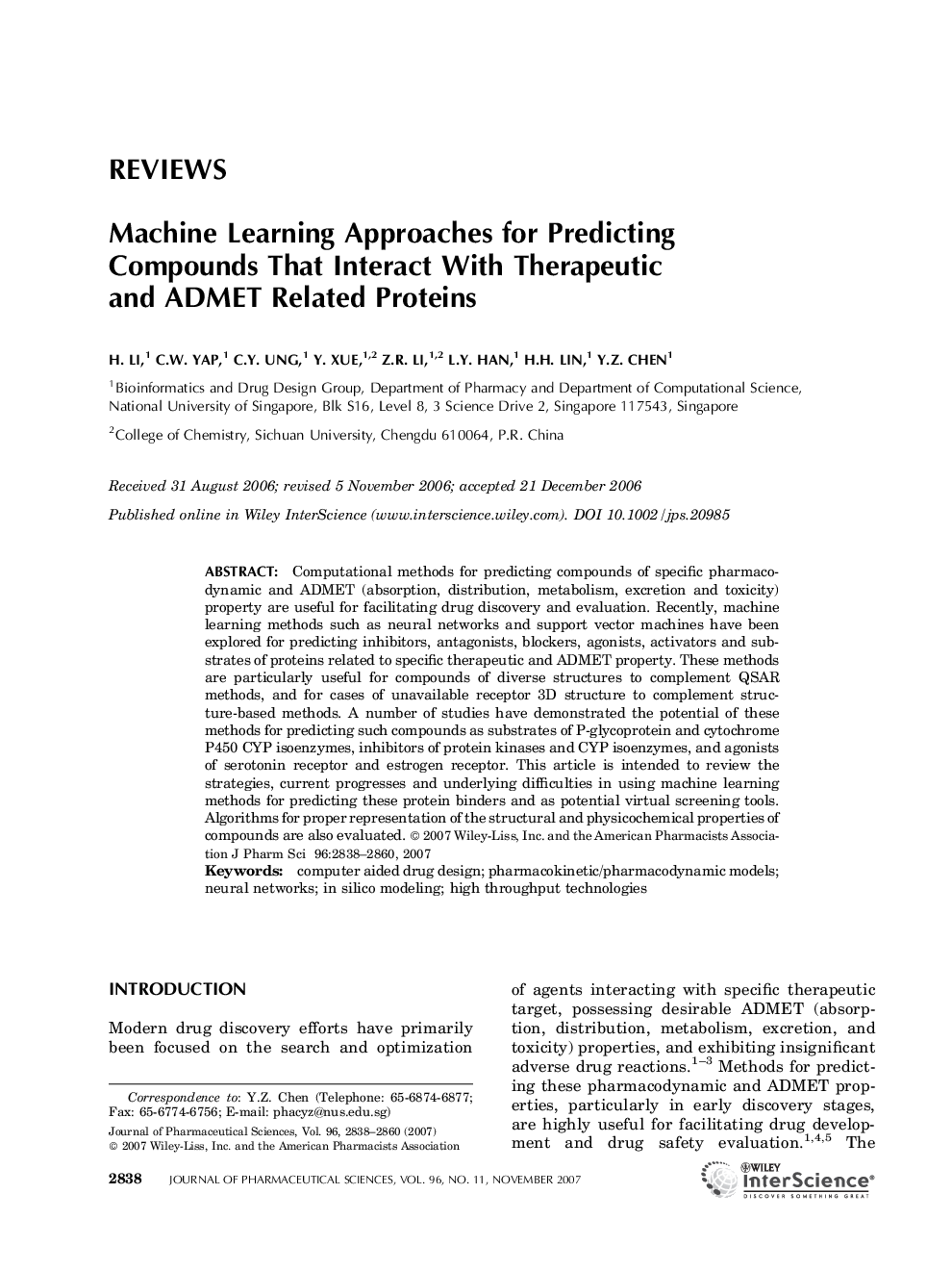| Article ID | Journal | Published Year | Pages | File Type |
|---|---|---|---|---|
| 2487716 | Journal of Pharmaceutical Sciences | 2007 | 23 Pages |
Abstract
Computational methods for predicting compounds of specific pharmacodynamic and ADMET (absorption, distribution, metabolism, excretion and toxicity) property are useful for facilitating drug discovery and evaluation. Recently, machine learning methods such as neural networks and support vector machines have been explored for predicting inhibitors, antagonists, blockers, agonists, activators and substrates of proteins related to specific therapeutic and ADMET property. These methods are particularly useful for compounds of diverse structures to complement QSAR methods, and for cases of unavailable receptor 3D structure to complement structureâbased methods. A number of studies have demonstrated the potential of these methods for predicting such compounds as substrates of Pâglycoprotein and cytochrome P450 CYP isoenzymes, inhibitors of protein kinases and CYP isoenzymes, and agonists of serotonin receptor and estrogen receptor. This article is intended to review the strategies, current progresses and underlying difficulties in using machine learning methods for predicting these protein binders and as potential virtual screening tools. Algorithms for proper representation of the structural and physicochemical properties of compounds are also evaluated. © 2007 WileyâLiss, Inc. and the American Pharmacists Association J Pharm Sci 96: 2838-2860, 2007
Keywords
Related Topics
Health Sciences
Pharmacology, Toxicology and Pharmaceutical Science
Drug Discovery
Authors
H. Li, C.W. Yap, C.Y. Ung, Y. Xue, Z.R. Li, L.Y. Han, H.H. Lin, Y.Z. Chen,
